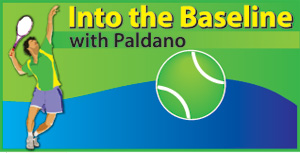Paris Sand-traps big names
 “Best forgotten” are the words of Women’s No.1, Germany’s Angelique Kerber, at the press conference after she lost in the very first Round of the French-Open, to Ekaterina Makarova, Ranked 40. She also had the worst Clay Court (CC) European season this year. Kerber, like UK’s Konta, who lost to Suweihsieh of Taipei, Ranked 109, in the early rounds, and many others, were sand-trapped at Roland Garros in Paris. The run up CC season has been bad and strenuous for many top ranked players. Roger Federer at 35, skipped the entire CC season, including the French-Open, due to this. He has an uncertain knee.
“Best forgotten” are the words of Women’s No.1, Germany’s Angelique Kerber, at the press conference after she lost in the very first Round of the French-Open, to Ekaterina Makarova, Ranked 40. She also had the worst Clay Court (CC) European season this year. Kerber, like UK’s Konta, who lost to Suweihsieh of Taipei, Ranked 109, in the early rounds, and many others, were sand-trapped at Roland Garros in Paris. The run up CC season has been bad and strenuous for many top ranked players. Roger Federer at 35, skipped the entire CC season, including the French-Open, due to this. He has an uncertain knee.
CCs have always affected the top players, making the French-Open title unattainable to players even such as John McEnroe, Boris Becker and Martina Hingis. All of them played close to 10 times each in Paris and were never able to win it. Whereas, Spaniard Rafael Nadal played 12 times and won it 9 times. It looks like, in Tennis, the surface on which a player develops will always have an advantage. Spain is predominantly Red Clay. For others, ‘Red Clay is a Sand-trap’.
Secrets of Clay
Historically, a game like Tennis is supposed to have been played in ancient Egypt, and it is the French who brought it to Europe. The word “Tennis” is of French origin. ‘Modern Tennis’ was first played after 1850 in England, on Grass Courts. Grass being difficult to maintain and permitting limited days of play a week, sand became the popular surface and was able to reach the remotest countries of the world. While the game is extremely fast on Grass, it is the opposite on Clay, very slow. This slow speed traps good players and make them lose their natural rhythm.
The European CC is loose, red burnt clay. Sand surface is never compact and it influences the ball with the bounce. The bounce changes the speed and trajectory of the flight, much more than on Grass. Clay also makes spin shots have extreme effect. In short, players will have a tough time to coordinate and time a shot. All these reduce tactical intensity and make the rallies long. Often, players cannot play the shot of their choice to conduct effective tactics. Good players depend heavily on speed to implement their tactics. When this is denied, it is a nightmare to them. This traps good players and make them lose to weaker players, especially, in the early Rounds.
French-Open – beyond Stroke-making
Venus Williams is playing her 20th French-Open. Isn’t it amazing to last that long in competition Tennis. Petra Kvitova returned to competition Tennis after the unfortunate knife attack in her own home in the Czech Republic, and won her first match impressively. Women’s Tennis, this year, is not dominated by any 1 player. Romanian Halep, who also won with an injured knee, put it well, implying that, at least 20 in the main draw are prospects to win the title this year.
In the Men’s too, it is open, apart from the top 3, Andy Murray, Novak Djokovic and Stanislaus Wawrinka, there are at least 3 others who can win.
On Clay, there is a limitation when it comes to winning with their strength, for which players are known for. Improvisation and adapting to the surface can also take a player far. It must be known that, it is a difficult route, as a player has to think different. Of all known changes, the most difficult to change is the trend of thought. Only the very matured player can control thought and win. That does not mean the match can be played and WON with limited ability. Simply, for that reason, opponents are not limited versions, tactically or technically.

Angelique Kerber
The more matches one sees of the French-Open’s early Rounds, more confused one is, as to how players confront this many variety of players and Win. Taipei player Suweihsieh who beat Johanna Konta of Briton, was hardly a stroke-maker. She lost tactically in the 1st Set, and lost it badly. Then changed her game to improvise and scraped through the 2nd Set. In the 3rd Set her improvisation became more profound and rattled Konta completely. The kind of wins will never be known to players until they are on court against an opponent. At an elevated level of the competition, the formula to win does not come from player’s stroke-making ability, but how the player internalises the competition in spirit and character. Only these can change the behavior and win matches.
Doubles and Mixed
French-Open is one of the few events where both genders play at the same time. Most of the time, this is not the case. This year has the strongest field of Doubles and Mixed Doubles combination. They will mostly be played in the 2nd week, in a modified format.
Style in Paris
It is difficult to separate fashion and sport in Paris. Even on court which is turning out to be sand-traps to good players, clothing exhibits a sense of fashion. Clothing, this year, is dominantly, ‘spring green’. This includes footwear too.
George Paldano, Former int. player; Accredited Coach of Germany; National, Davis-Cup, Federation Cup captain/coach– geodano2015@gmail.com –


